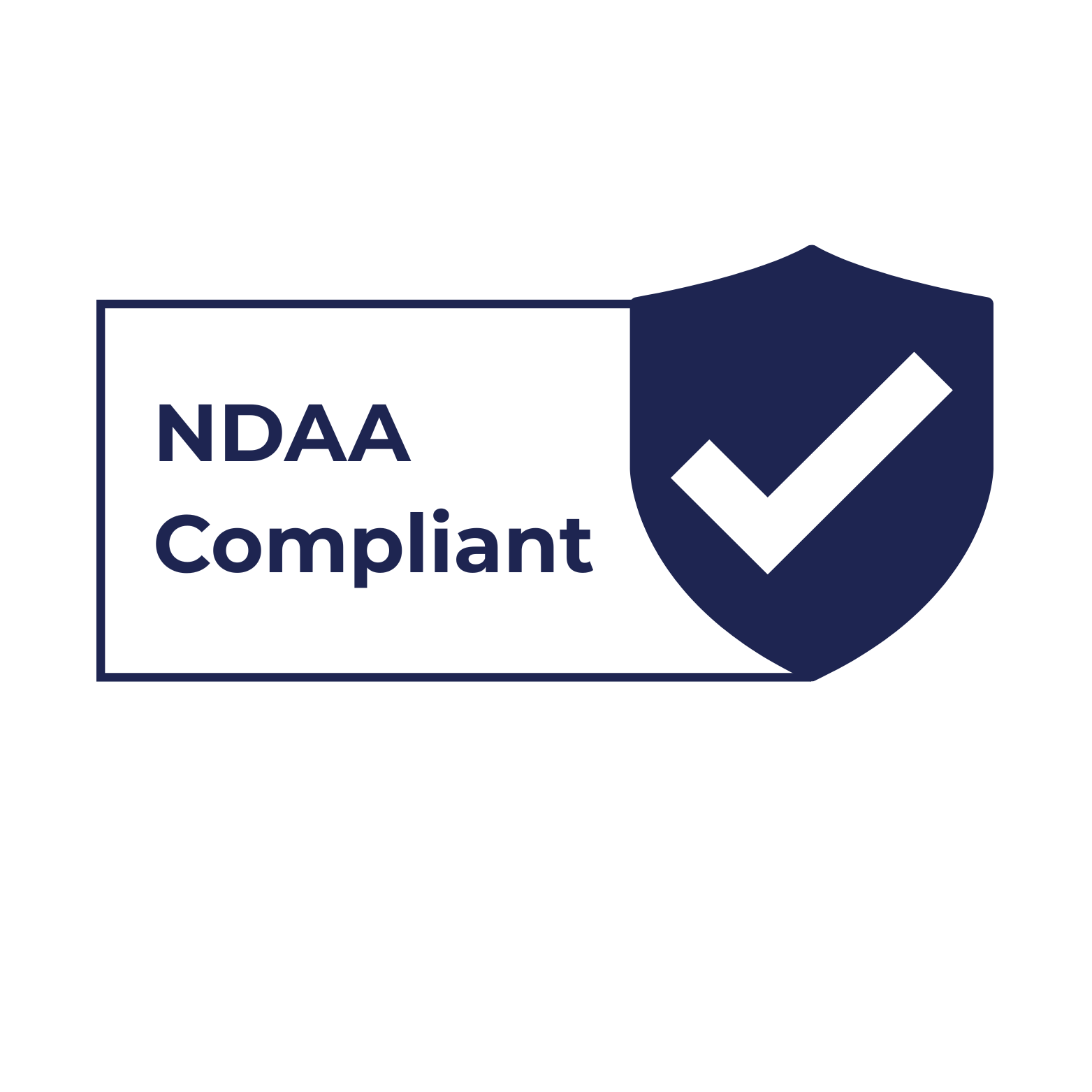Security is only as strong as the trust behind it.
For organizations operating in government, critical infrastructure, or federally funded projects, technology must not only deliver performance, but must also meet strict legal and regulatory requirements.
One of the most significant today is NDAA Section 889 compliance.

The National Defense Authorization Act (NDAA) is a U.S. federal law that shapes policy across defense and security sectors. One of its most significant implications for the physical security industry is Section 889, which restricts the use of video surveillance and telecommunications equipment from certain manufacturers identified as national security risks.
For U.S. government facilities, federally funded projects, and the integrators that support them, NDAA compliance is not optional — it is a legal requirement.
Why NDAA Section 889 Matters
-
Eligibility for government contracts: Only compliant technologies can be specified for federal projects, meaning non-compliant equipment cannot even be considered.
-
Meeting legal obligations: Section 889 directly prohibits procurement or renewal of contracts involving restricted manufacturers.
-
Reducing cybersecurity risk: By excluding high-risk suppliers, the NDAA reduces exposure to backdoors, data interception, or manipulation.
-
Building trust: Integrators and organizations working with compliant technologies demonstrate alignment with U.S. security policy and reinforce long-term credibility.
-
Risk mitigation: Compliance helps organizations avoid costly system replacements, legal exposure, or contract loss.
Who Is Restricted Under Section 889
The legislation prohibits U.S. federal agencies, contractors, and grant recipients from procuring, renewing, or extending contracts for systems that use equipment from:
-
Huawei Technologies
-
ZTE Corporation
-
Hytera Communications
-
Hangzhou Hikvision Digital Technology
-
Dahua Technology
(including their subsidiaries and affiliates)
Monitoreal’s Compliance
All Monitoreal products are fully compliant with NDAA Section 889.
-
No restricted chipsets, modules, or OEM components are present in our devices.
-
Our supply chain has been verified and documented against the prohibited list.
-
Customers, partners, and integrators can deploy Monitoreal solutions with confidence in government, critical infrastructure, and federally funded environments.
This ensures that when you choose Monitoreal, you’re choosing security solutions that are not only powerful, private, and subscription-free — but also fully aligned with U.S. federal compliance standards.
What This Means for Our Partners and Customers
-
Integrators and distributors can confidently specify Monitoreal products in bids where NDAA compliance is mandatory.
-
Government and federally funded projects can leverage advanced AI video analytics without compliance concerns.
-
Enterprises and critical infrastructure operators benefit from future-proof assurance that systems meet one of the industry’s strictest benchmarks.
Staying Compliant, Staying Ahead
Compliance is not a one-time milestone — it’s an ongoing responsibility. Monitoreal continually monitors its supply chain to ensure our solutions remain free from restricted components and in step with evolving regulations.
Monitoreal NDAA Compliance Statement
All Monitoreal devices are compliant with Section 889 of the U.S. National Defense Authorization Act (2019). Our solutions contain no components or technology from Huawei, ZTE, Hikvision, Dahua, Hytera, or their subsidiaries and affiliates.
For official statement please click here or Contact Us for more information or a signed compliance certificate.

